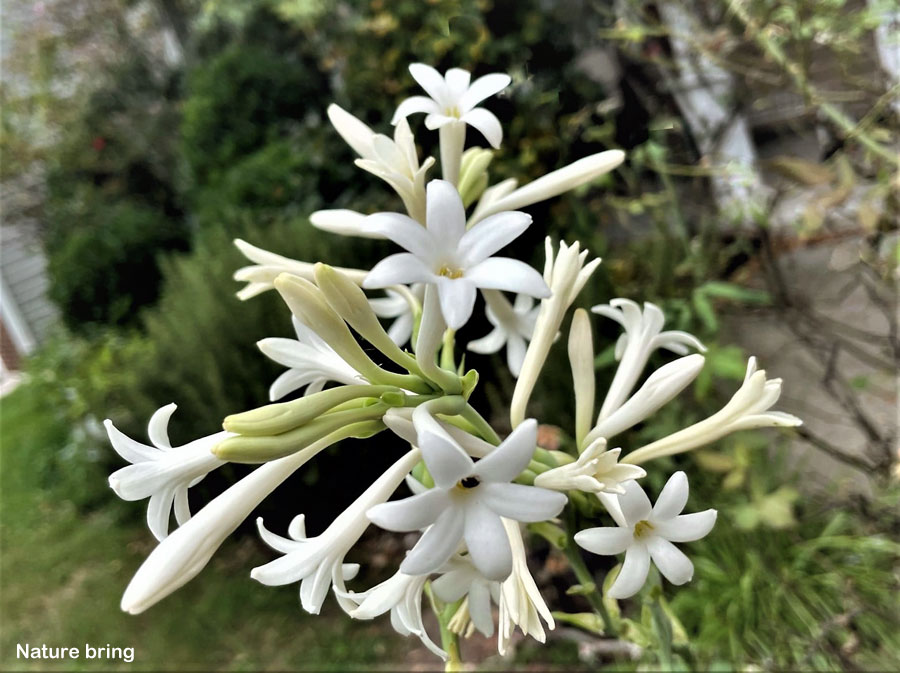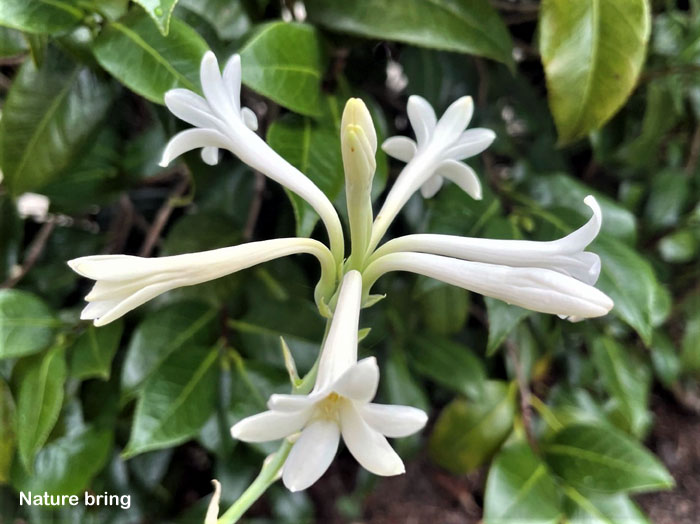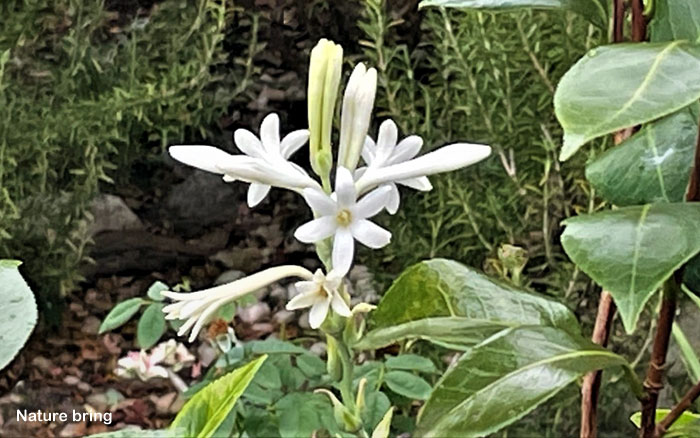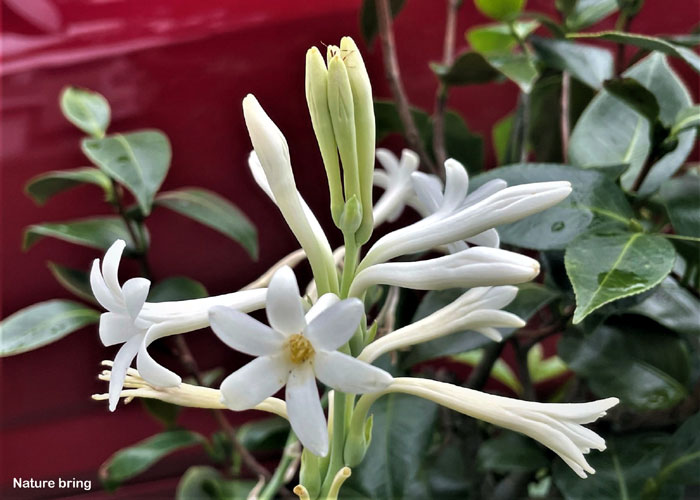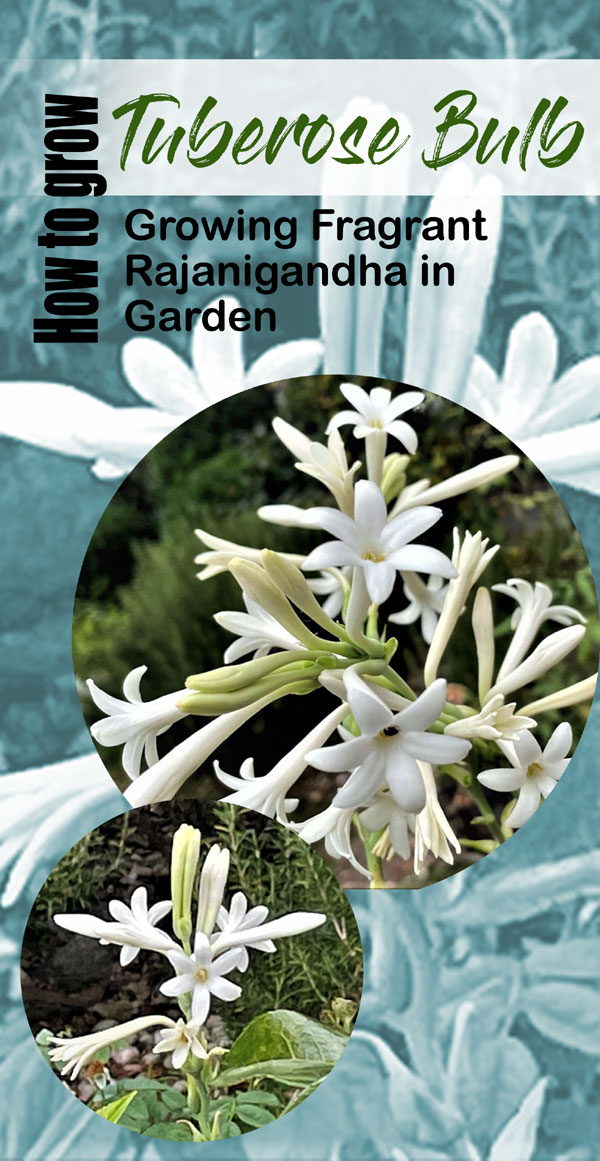Tuberose Plant (Rajanigandha)
The tuberose plant is one of the most important tropical ornamental flowering plants with many tubular blooms, it produces long-lasting flower spikes and is recognized for its enticing aroma. People also know this fragrant plant as Rajanigandha or nishigandha. Polianthes tuberosa plant is native to Mexico and belongs to the family Amaryllidaceae. Known for their pleasing fragrance, the longer vase life of spikes, higher returns, and adaptability to a variety of climates and How to Grow Tuberose Bulb, tubers are an important cut as well as loose flower crop.
The aesthetic world values them highly for their beauty and fragrance. Beautiful and elegant, the flowers give off a sweet fragrance. Since ancient times, its fragrant white flowers have been valued for their aromatic oils. Flowering all year round, tuberose’s flower clusters are fragrant; florets are star-shaped, waxy, low-growing, and loosely arranged on spikes up to 45 cm long. Its essential oil plays an important role in high-grade perfumes because of its strong aroma.
Overview of the Tuberose Plant
Scientific name Polianthes tuberosa
Common name Tuberose, Rajanigandha, nishigandha, tuberosa plants
Plant type Flowering plant
Sun requires Full Sun
Soil well-drained, fertile and moist soil
Soil pH 6.5 -7.5
Zone 7-10
How to Grow and Care Tuberose Bulb
Tuberose bulbs should be planted in spring after all danger of frost has passed. A layer of soil 2 to 3 inches above the top should cover the entire clump. Plant each clump 8-10″ apart. Typically, tuberoses bloom between mid-and late summer, 90-120 days after planting. You may clip stems when they are in bloom to make bouquets. There will be an abundance of extremely fragrant flowers from this method, without causing harm to the plants. Do not cut off the foliage after blooming is finished for the season. As they gather sunlight, the leaves will nourish the show next year. Following the resting period, your tuberose will start the next growing cycle.
Sunlight
The Tuberose is a sun-loving plant. A site that receives sufficient sunlight throughout the growing season is ideal for generating strong vegetative growth and maximum flower production. Plant your tuberose in a location that receives sunlight for six to eight hours a day. Tuberose is a tropical plant that grows best in a mild climate and should only be moved to partial or bright shade if it begins to wither or dry out.
Soil
A soil pH range between 6.5 and 7.5, with good aeration and drainage, is ideal for the cultivation of tuberose. Tuberose needs soil that drains well and is rich in nutrition. Blend organic material into your garden soil, such as peat moss, compost, or old, decomposing manure. In addition to retaining soil moisture, mulches also maintain an even soil temperature. It is best to keep mulch off your plants’ stems to prevent rot. Raise this mixture 2 to 3 inches (5 to 7.5 cm) above the original soil surface to prevent it from pooling.
Water
Be sure to water your tuberose bulbs after planting to settle the soil around them. Water before the soil dries out completely, but don’t let it completely dry out. As the plant grows, green tips will appear, and its roots will expand and become stronger, allowing it to handle more water. It is important to water regularly during the growing season if rain is not frequent. It’s important not to overwater tuberose since it can rot easily, which is why you should use well-draining soil.
Fertilize your Polianthes tuberosa plant
Polianthes tuberosa plants require high levels of nutrition and benefit from the application of 8-8-8 fertilizer while they are actively growing. Ensure the soil around the plant is fertilized once every six weeks with solid fertilizer, or using liquid fertilizer according to packaging instructions.
Temperature
The commercial cultivation of tuberose occurs mainly in humid and warm areas with average temperatures ranging from 18 to 32 degrees Celsius. The ideal temperature for plant growth is between 26 and 30 degrees Celsius. In order for the tuberose to bloom in autumn, it needs a long growth period. Tuberoses may survive one light frost, but it’s best to avoid taking any risks. If you live in a temperate climate, the first frost may occur in autumn or winter.
Pruning
Gently lift the root system with the trowel from the soil by getting right under it. Make sure there are no soft spots, rot, or damage to the roots. Brush away excess soil from the roots. If the roots are damaged, you can cut them off. You can use a trowel to cut the roots apart or use a sharp knife if needed.
Read more:
How to grow and care for Rhipsild plants. Growing and caring for Bougainvillea plants. Celery Growing in containers. Lemon blam plants growing and care tips. Organic sage plants growing guide. Beautiful indoor plants Growing at home. Calendula herbs growing guide. How to grow Gerbera daises at home. Delphinium Plants growing guide. Gardenia flowering shrub growing in pots. Holly tree growing in containers.
For pin:

